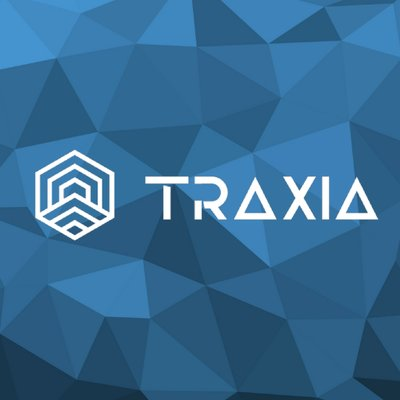Your Rating:
Our Rating:
Quick Summary
236 crypto investors read thisTraxia wants to make it easier and less expensive for small and medium-sized businesses to receive quick payment for the bills that they send to their customers. Essentially, Traxia is building a factoring platform based on the blockchain, with the goal of disrupting the trade finance industry.
The ICO for Traxia's token, TMT, took place between May 1, 2018, and June 2, 2018.
The Problem and Solution
To understand what Traxia is doing, you first have to step back and understand what the invoicing process looks like for most small or medium businesses.
If you're a small or medium business, you typically have to wait weeks, or sometimes months, before the bills or invoices that you send to your customers are paid. This is just the nature of billing and invoicing; few bills are paid instantaneously.
Payment delays are bad for small and medium-sized businesses because they can create cashflow problems. These businesses typically do not have large cash reserves, so they rely on incoming invoice payments to make payroll, acquire new inventory, and so on.
A common solution to this problem is what is known in the finance world as factoring, which is a form of trade finance. Factoring refers to the process of receiving payment immediately from a third party -- typically a bank that specializes in factoring -- when you submit a bill to a client. When the client actually pays, the payment goes to the third party, who charges a fee for his or her services. In other words, factoring essentially means that you sell your business's accounts receivable invoices to someone else, who fronts you the money so that you get paid quickly and receives a commission in return.
Factoring has been a well-established practice in the finance world for decades. So how can the blockchain make it better?
The answer is that Traxia believes trade finance and factoring would work better if the networks that facilitate them were decentralized and information was stored on a blockchain. Traditionally, if you want to take advantage of factoring, you have to work with a bank. The bank gets to decide whether or not to work with you, as well as which fees to charge for its services. Some banks will refuse to provide factoring services to smaller businesses because they view them as too risky. They may also charge especially high fees to these businesses.
On Traxia's platform, the factoring process becomes decentralized and open to anyone. By using the blockchain to manage trade finance processes, Traxia aims to allow anyone to act as the third party who fronts payment for invoices. The platform is also designed to open up the factoring process to other types of stakeholders, such as investors who want to purchase bundles of invoices at a discounted rate.
In addition, by using the blockchain, Traxia is able to execute factoring agreements via smart contracts, providing a deeper level of security and assurance that each party in the process will act as promised.
An important feature of Traxia is that, while the blockchain powers the factoring process, the invoices that are bought and sold on the platform are redeemable in fiat currency. In other words, businesses and investors who use Traxia's platform will be paid in dollars, Euros, or whichever non-digital currency they currently use; the blockchain and Traxia's token, TMT, work in the background.

The Team
Traxia itself does not identify its leadership team on its site. Instead, the organization highlights the leaders of LiqEase, a technology provider that forms a core part of the ecosystem Traxia is building. (Although the exact relationship between LiqEase and Traxia is only vaguely spelled out in the Traxia whitepaper, it appears that LiqEase is leading the development of the actual Traxia platform, while Traxia itself is a nonprofit foundation that defines the platform's mission.)
LiqEase's executives include:

Tobias Pfütze, CEO. Prütze's background is in business development and management.

Jean-Michel Lied Lied, CTO. A computer scientist by training, with particular expertise in security.

Bruno Botelho, CMO. Has held a variety of management positions at other startups. LiqEase appears to be Botelho's first executive marketing role.
Apart from Botelho, none of the LiqEase executives appears to have worked with other blockchain-related startups in the past.
The Token
The Traxia token, TMT, serves as the payment instrument for users of Traxia's platform. In order to buy or sell invoices, participants must pay with TMT tokens.
TMT tokens are used only for this internal purpose on the platform. As noted above, the invoices that are traded on Traxia can be issued in fiat currency.
The Community
A user account named traxia exists on GitHub, but it does not seem to have committed any code, nor is it clear whether the account is even related to the Traxia Foundation. It, therefore, does not appear that any of Traxia's source code is publicly available.
Traxia also maintains an active Twitter account and a Telegram channel.
It is worth noting that the somewhat ambiguous relationship between Traxia and LiqEase makes it hard to determine exactly how Traxia plans to engage with the community. As noted above, Traxia appears to have no leadership team of its own; it is instead led by LiqEase executives. LiqEase is harder to reach through public channels; it does not have a Telegram account, and its Twitter account is very inactive.
Next Steps
All in all, we're on the fence about Traxia's worthiness as an investment.
On the plus side, the organization has identified a clear problem and mission: improving access to factoring services for small and medium businesses.
On the negative side, it is unclear to what extent the world really needs a blockchain-based factoring solution. It's true that it is usually a bit harder for a small or medium business to access factoring services than it is for a large, well-established enterprise to do the same. But it's not impossible. Smaller organizations may pay higher fees for factoring, and certain banks might refuse to work with them, but it's usually easy enough for any legitimate business to get some form of credit based on its receivables. While Traxia does appear poised to provide somewhat easier access to factoring services, doing so won't really revolutionize trade finance; it will just make trade finance a little easier for smaller businesses.
It's also true that the centralized nature of conventional trade finance services makes it hard for small-scale investors to enter this market and for businesses to get the best rates on factoring services. These are challenges for small and medium businesses, but they are not game-stoppers. In this sense, too, we see Traxia adding only incremental value, not totally disrupting the market.
Finally, we wish Traxia were a bit more transparent. Its relationship with LiqEase, which itself does not have a strong community presence, should be more clearly defined. It would be good to be able to see the source code to ensure that Traxia (and/or LiqEase) is building an actual platform.
Given that other companies, like Populous World and Acudeen, are also developing trade finance solutions based on the blockchain, investors have plenty of options to explore if they want to involve themselves in this market. While Traxia is one investment option, we'd advise evaluating the alternatives before choosing where to put your money.
Raised Amount Unreported: contact us to update this information



